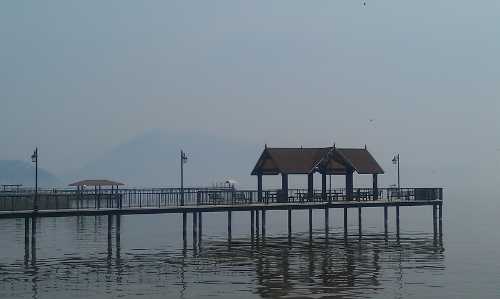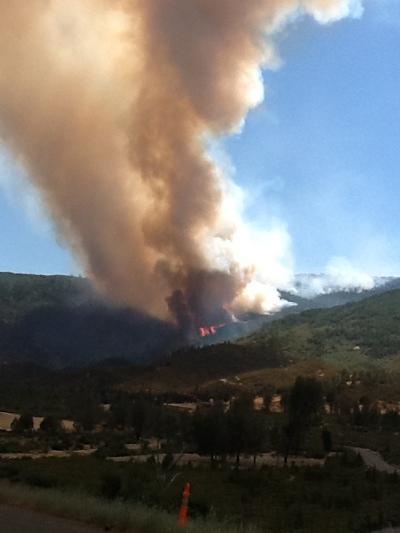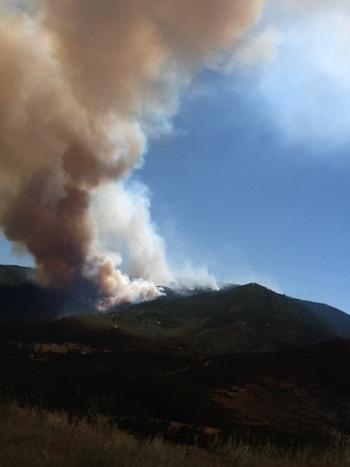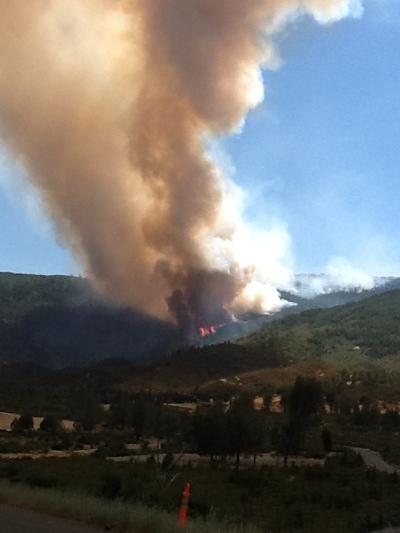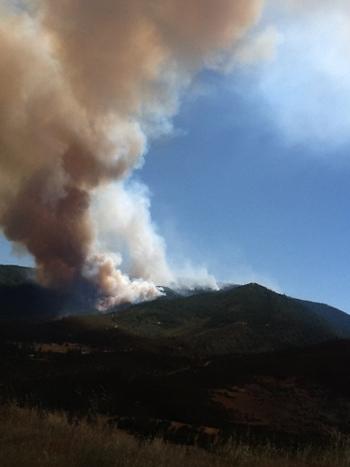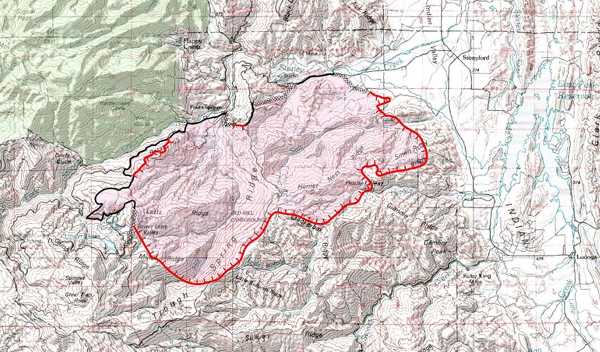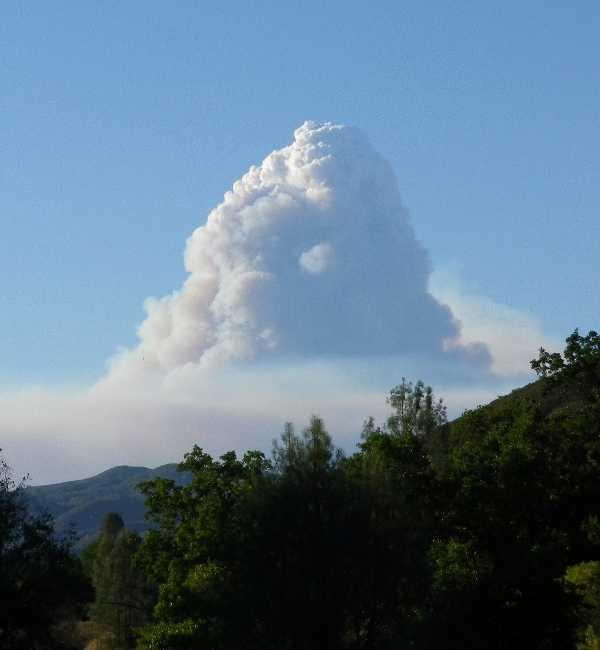- Lake County News reports
- Posted On
Air quality alert: Mill Fire smoke degrades county’s air conditions
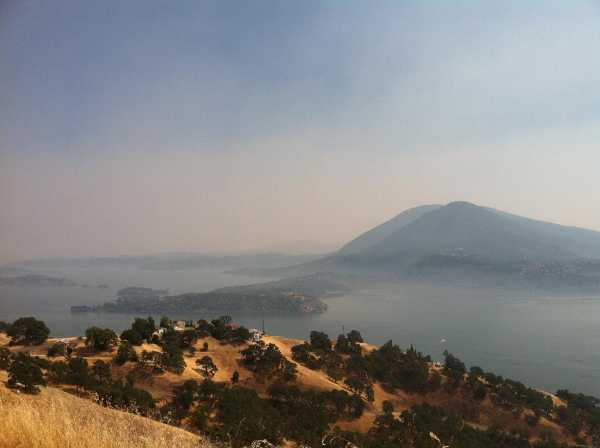
LAKE COUNTY, Calif. – Smoke from a large wildland fire in neighboring Colusa County has led to the issuance of an air quality alert for Lake County residents.
Smoke from the Mill Fire – burning since Saturday in the Mendocino National Forest – has poured into Lake County’s air basin, with conditions becoming especially hazy on Tuesday.
The fire was reported to be 13,000 acres and 20-percent contained on Tuesday, according to Mendocino National Forest officials.
On Tuesday evening Lake County Air Quality Management District issued an alert cautioning residents of unhealthy air conditions.
Values have exceeded state health-based particulate standards for small respirable particulate and ozone (photochemical smog), according to Pollution Control Officer Doug Gearhart.
He said that based on expected wind conditions and levels of particulate and ozone presently in the air, it’s predicted that Wednesday’s conditions will range from “unhealthy for sensitive individuals” to “unhealthy for everyone.”
Greatest concern exists from mid-morning through early evening, with conditions expected to improve as the afternoon west wind start to clear out the smoke, Gearhart reported.
The “unhealthy” alert results from smoke transported by winds and ozone generated with the smoke, high temperatures, significant sunlight and humidity, according to the report.
The smoke and sunlight cause chemical reactions in the air that further reduces visibility by forming secondary particles in addition to those already in the smoke. Gearhart reported that the particles draw the moisture out of the air, growing in number and size, making the haze even worse.
Residual haze and particulate from the region’s many ongoing wildfires can be expected to continue throughout Lake County until the fires are out, he said.
Gearhart said the morning inversion layer minimized impacts on the basin floor.
Earlier in the afternoon, he reported that the one-hour average measurement in Lakeport was greater than 90 percent of allowed state health-based particulate standards, designed to protect sensitive groups of the population, for small respirable particulate and the ultrafine, inhalable particulate.
Lake County Public Health Officer Dr. Karen Tait advised area residents to be cautious in resuming normal outdoor activities.
“Variable weather conditions and ongoing fire activity may result in localized areas of reduced air quality, which could still pose health risks to people with underlying health conditions,” she said. “Since we can’t always predict when and where ‘pockets’ of poorer air quality may occur, it is prudent to be careful until conditions stabilize.”
Smoky conditions can cause irritation of the eyes, nose and air passages, which can be hazardous for sensitive individual including young children, the elderly, individuals with heart conditions or chronic lung disease such as asthma, bronchitis and other respiratory conditions, Gearhart reported. The heat can make the stress worse, especially if exercising hard.
Individuals with asthma, bronchitis, emphysema and other lung or heart diseases should carefully adhere to their medical treatment plans and maintain at least a five-day supply of prescribed medications. They should limit outdoor activity and unnecessary physical exertion, county health officials reported.
Air conditioning that recirculates indoor air should be used, when available. Drinking plenty of water to avoid drying of the airways is recommended, unless restricted for medical reasons.
Dust masks are not protective against the most harmful pollutants caused by wildfire smoke that drifts to nearby areas. They are useful in filtering out the ash and larger particles that are encountered in burn areas and should be considered when recovering property or cleaning areas that have burned, health officials reported.
Air purifying respirators, such as N-95 filtering face pieces, may be effective in reducing harmful particulate matter, but also increase the work of breathing, can lead to physiologic stress, and are not recommended as a general protective measure.
